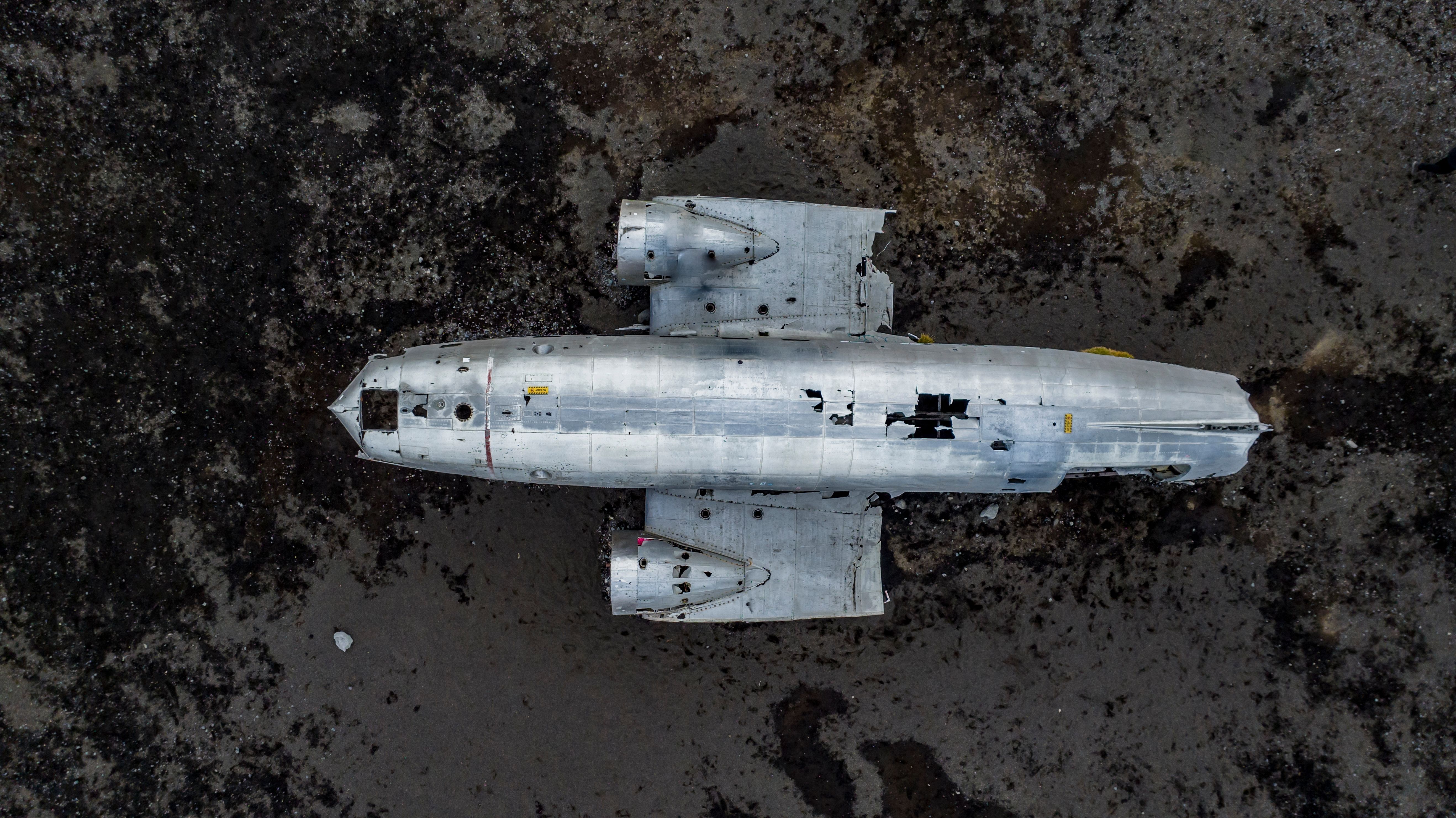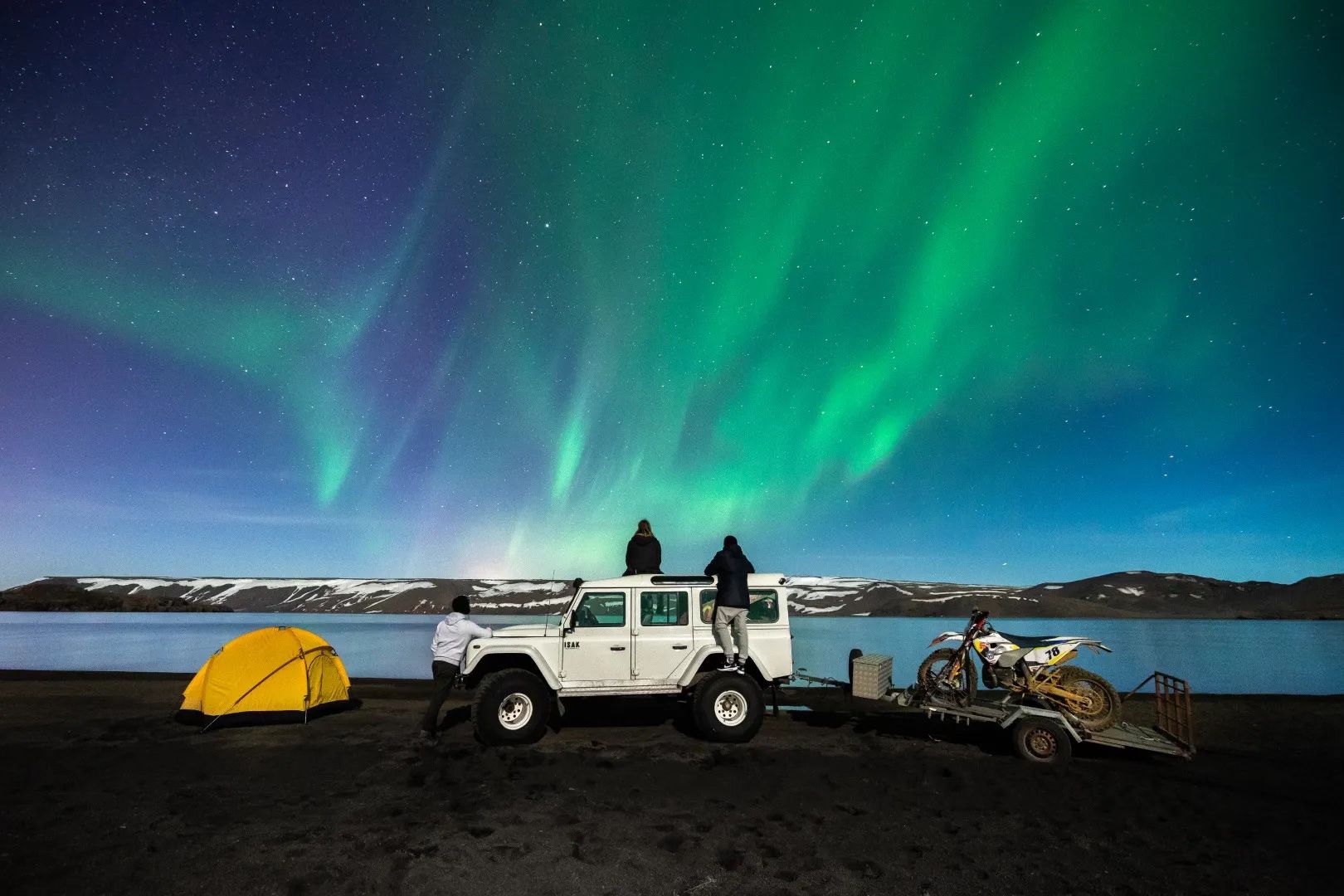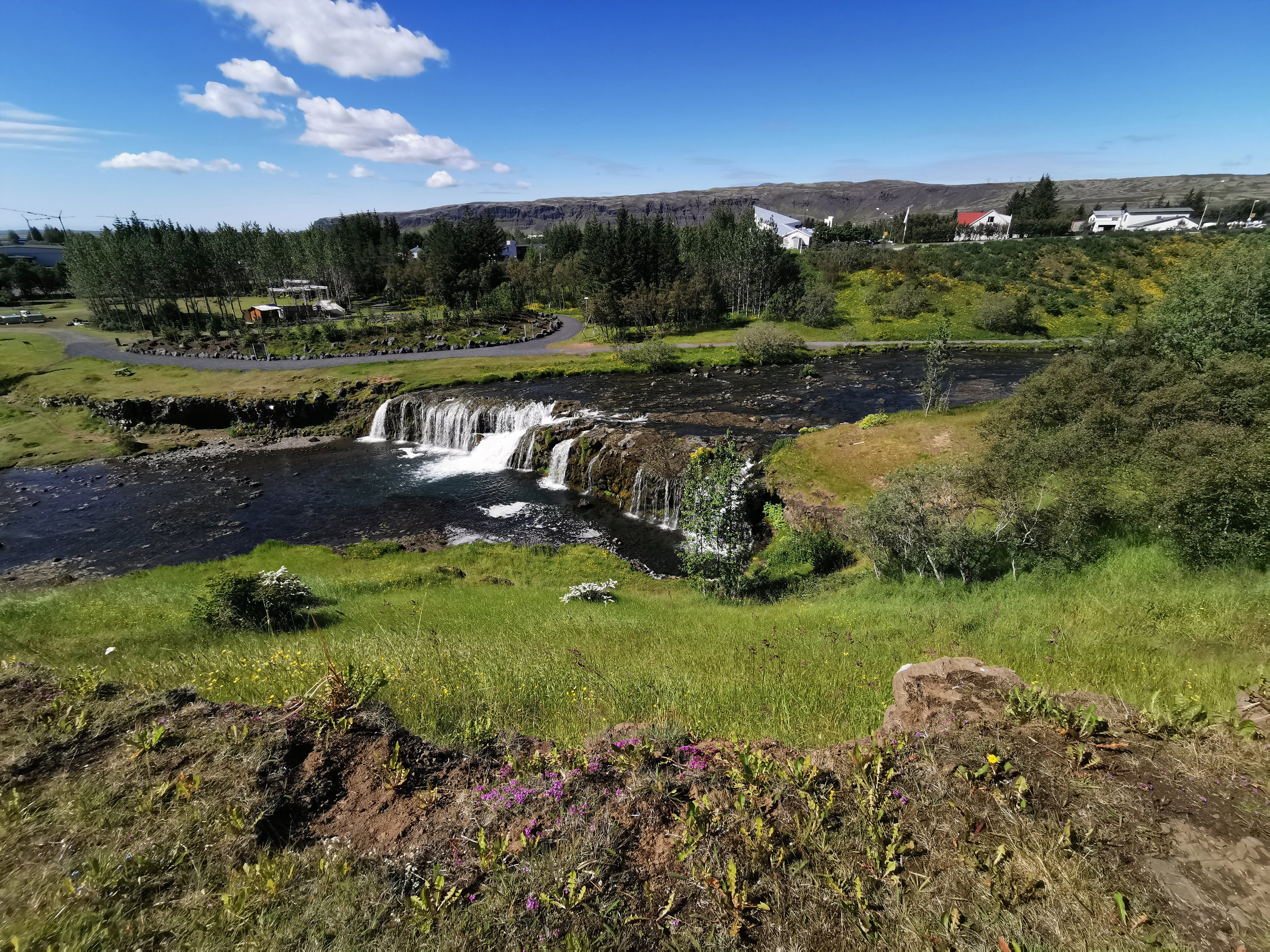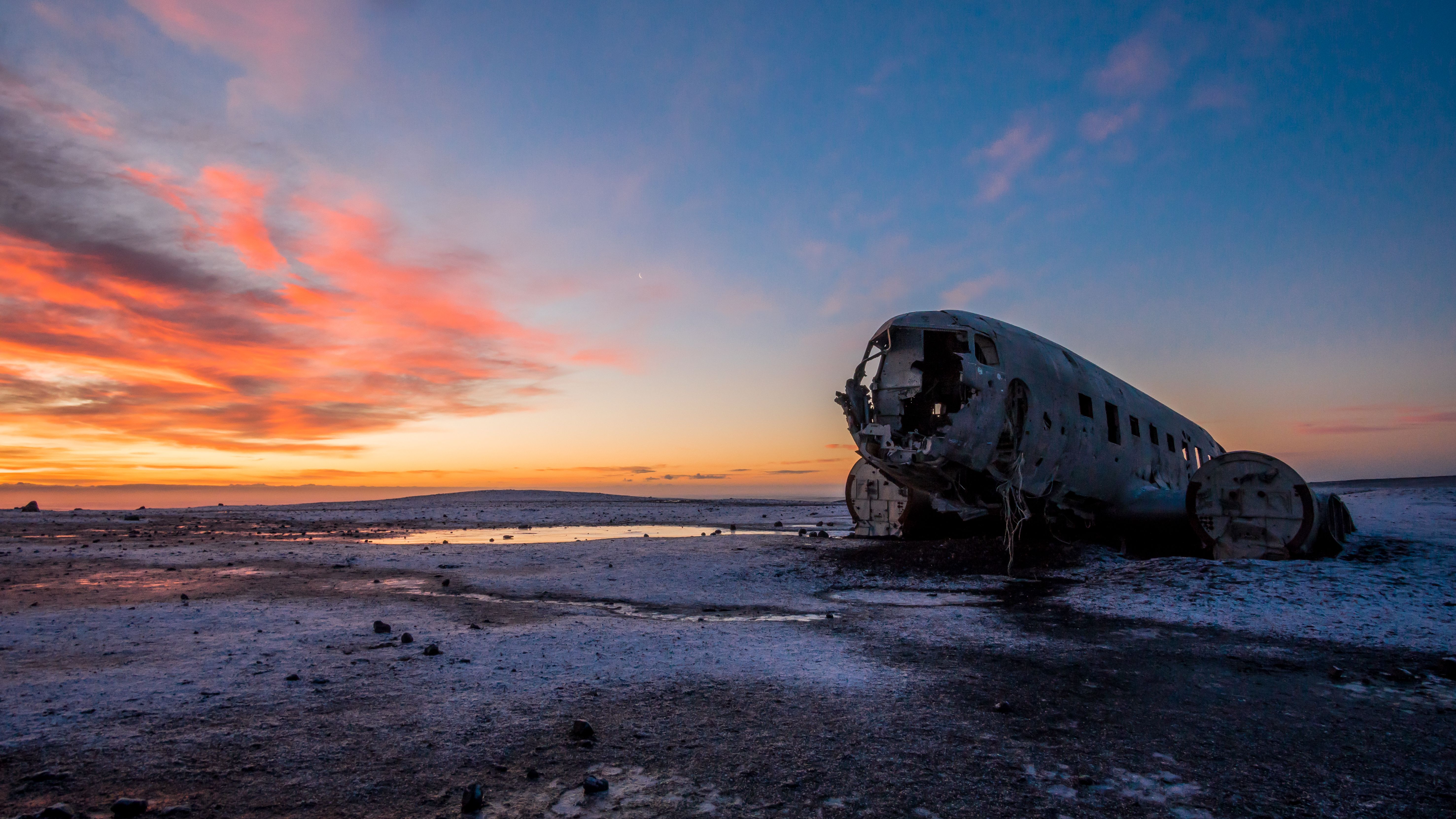Summary
- The 1973 US Navy crash on Sólheimasandur beach is now a tourist hotspot due to its striking visual appeal.
- Visitors must be cautious due to unpredictable Icelandic weather and risks of exposure.
- The crash site is not just a scenic spot but also a reminder of Iceland’s aviation history.
If you’re ever visiting Iceland, a trip to Sólheimasandur beach will reward you with perhaps one of the world’s most Instagrammable plane crash sites. Nestled on the black sand beach, the wreck of a Douglas C-117 stands as a testament to a long-ago crash and makes for some pretty impressive photos – particularly when the aurora comes out to play.
A brief history of the crash
On November 21, 1973, a US Navy Douglas C-117D (a military variant of the DC-3) crash-landed on the black sand beach of Sòlheimasandur in southern Iceland. The aircraft was en route from Höfn to Keflavik when it is believed that severe icing caused both engines to fail.
Captain James Wicke and his co-pilot, Lieutenant Gregory Fletcher, managed to bring the plane down safely, and all crew members survived the incident, reportedly without a scratch on them. According to Amazing Iceland, the wreckage was stripped of all salvageable parts and abandoned on the beach, where it remains to this day.
.jpg)
Related
How Icing Downed An American Airlines Douglas DC-3 On This Day In 1943
The plane crashed while on the last flight of a six leg journey.
The world’s most famous DC-3 plane wreck isn’t actually a DC-3.
“In 1951, the US Navy evaluated the Douglas Super DC-3 (USAF YC-47F) and ordered the modernization of 98 C-47s (USN designation R4D). The aircraft had new outer wing panels, a longer fuselage and tail unit, engine nacelles that fully enclosed the undercarriage, and more powerful R-1820-80 engines. The aircraft was designated R4D-8, which became the C-117D after 1962. The C-117s were operational with the U.S. Navy and Marines until the early 1990s.” – Amazing Iceland
 Transformation into a tourist attraction
Transformation into a tourist attraction
Over the years, the Sòlheimasandur wreck has evolved from a left-behind piece of aviation history into a highly visited tourist site. Its hauntingly stark appearance against the black sands has made it a favorite subject for photographers, influencers, and outdoor adventure seekers.
The site gained international fame after being featured in music videos and travel documentaries, significantly boosting its visibility among global travelers.
Visiting the wreck site
To visit the wreck, travelers must embark on a 3.5-kilometer walk to and from the designated parking area near the Ring Road (Highway 1). The path to the crash site is flat and generally easy to follow in good weather, but it can become treacherous in poor conditions.
The weather in Iceland is notoriously unpredictable, with sudden changes that can obscure the trail and reduce visibility to near zero. Winter visitors must be particularly cautious, as snow and ice can hide the path and increase the risk of getting lost in the Icelandic landscape.
Photo: Banana Images | Shutterstock
Tips for visitors:
- Check the weather forecast before setting out.
- Wear appropriate clothing and footwear, layering for cold and wet conditions year-round.
- Bring a GPS or use a reliable map app to stay on course, and carry a backup paper map, just in case.
- Consider taking the shuttle service if available, especially during adverse weather conditions.
The plane’s legacy and its risks
Despite its allure, the Sòlheimasandur plane wreck site has a dark side. The same harsh conditions that may have contributed to the crash have posed significant risks to tourists. Tragically, several deaths have been reported due to exposure and disorientation.
Icelandic authorities and local guides emphasize the importance of preparing and respecting the environment when visiting such remote locations. Visitors are therefore cautioned to come well-equipped and be mindful of the weather to avoid further tragedies.
Cultural and historical significance
The Sòlheimasandur wreck is not just a tourist attraction but a poignant reminder of Iceland’s aviation history and the resilience required to navigate its challenging environment. The wreckage itself has become an iconic symbol, representing both the fragility and strength inherent in human endeavors in such a stark landscape.
It also serves as a physical testament to the stories of survival and the extreme conditions faced by aviators and explorers throughout Iceland’s history.
Photo: Netha Hussain, CC0, via Wikimedia Commons
Practical info for aviation enthusiasts
For aviation enthusiasts and those interested in visiting the Sòlheimasandur plane wreck, detailed planning and preparation are crucial to make the trip safely and successfully. Here are a few key points to consider:
- Location: The wreck is located on Sòlheimasandur Beach, approximately 10 kilometers south of the Skógafoss waterfall, and the round-trip trek from the designated parking lot is ~7 km of walking.
- Access: Accessible year-round, but visitors should be prepared for harsh weather, especially in winter.
- Equipment: Wear sturdy, waterproof boots, layered clothing, and bring your paper map as well as your favorite map app or GPS device. The redundancy is for your safety, first and foremost.
- Photography: The wreck is a popular spot for photographers, especially during sunrise and sunset when the light creates dramatic contrasts against the black sands of the volcanic beach it came to rest on.
Photo: Farris Noorzali | Shutterstock
Additional attractions nearby
While visiting the Sòlheimasandur crash site, travelers can explore several other remarkable sites in the vicinity. Skógafoss is one of Iceland’s largest and most famous waterfalls and is located a short drive from the wreck site.
Dyrhólaey is a promontory offering stunning views of the black sand beaches and the Atlantic Ocean (as well as being home to puffins during the summer months). Reynisfjara is another iconic black sand beach that’s famous for its basalt columns and powerful waves.

Related
Exploring Iceland On A Long Stopover: The Simple Flying Guide
Icelandic carriers Icelandair and PLAY give passengers the unique opportunity to tour the island before continuing their journey.
Reflecting on the Sòlheimasandur experience
The allure of the Sòlheimasandur plane wreck lies in the raw beauty of the natural environment it has become a part of and the sense of adventure it invokes. For many, the journey to the wreck is as significant as the site itself, offering a unique opportunity to experience Iceland’s stark and magnificent landscapes. However, it is essential to approach the visit with respect for nature’s power and an understanding of the inherent risks.
By preparing adequately and respecting the environment, visitors can safely enjoy the haunting beauty of one of Iceland’s most unusual and striking attractions.




